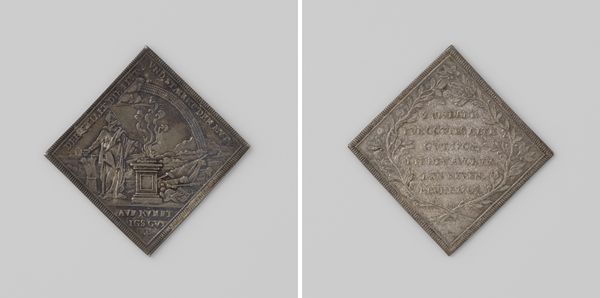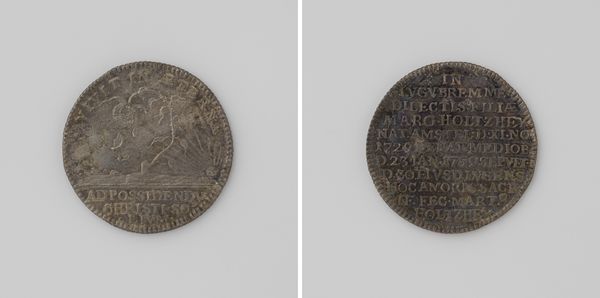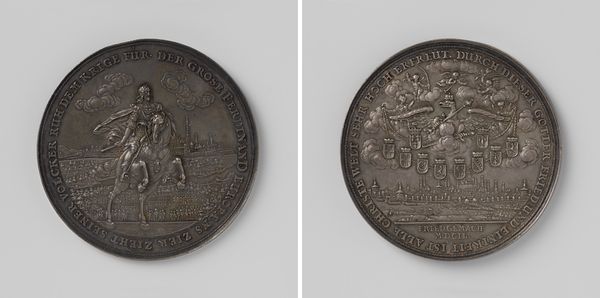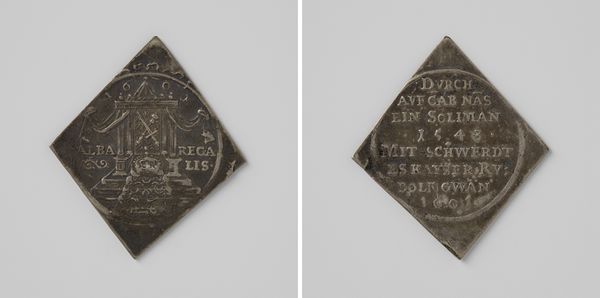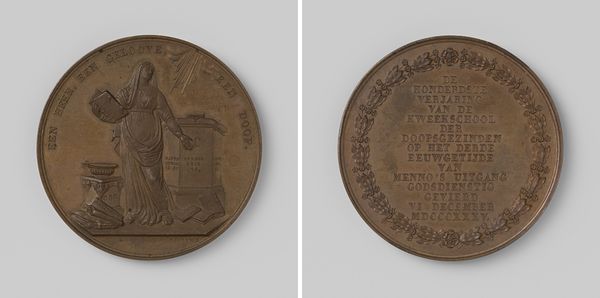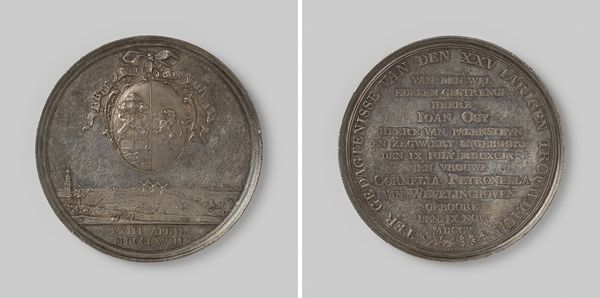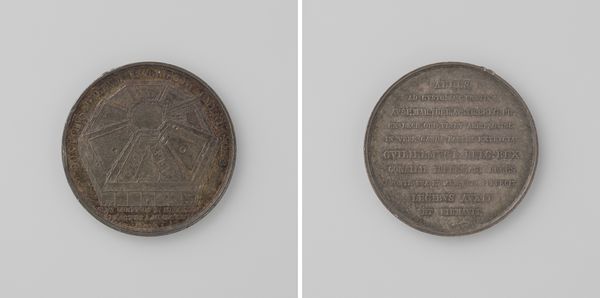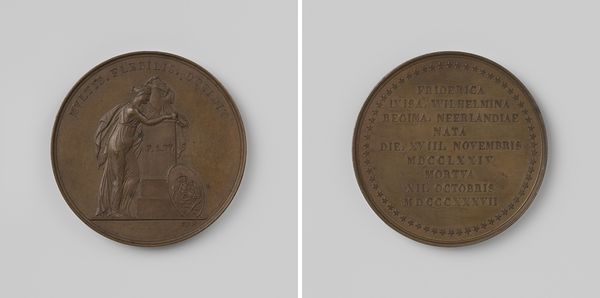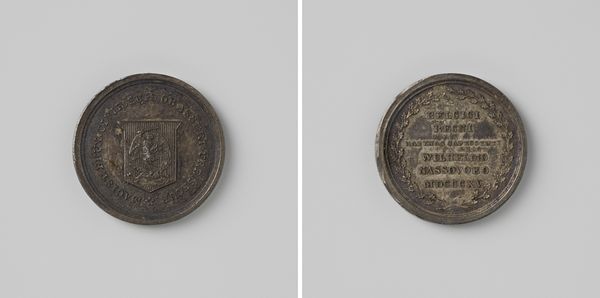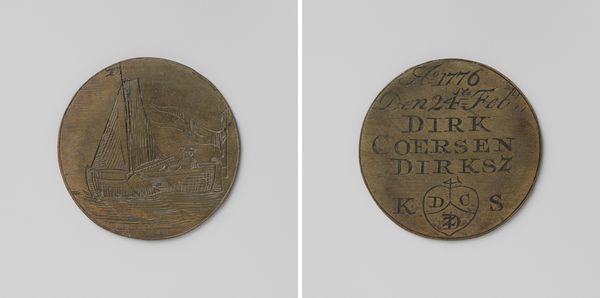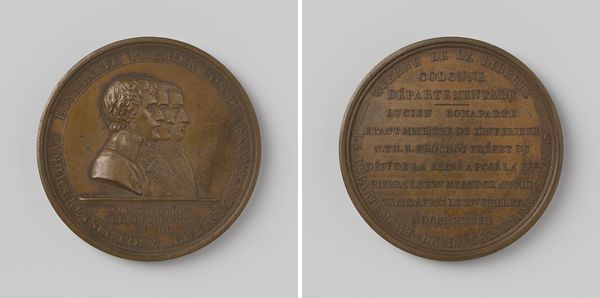
Vredesfeest van de kinderen te Augsburg en herdenking van de slag bij Blenheim 1704
0:00
0:00
metal, relief, sculpture, engraving
#
narrative-art
#
baroque
#
metal
#
sculpture
#
relief
#
carved into stone
#
geometric
#
sculpture
#
history-painting
#
engraving
#
statue
Dimensions: length 4.3 cm, width 4.3 cm, weight 6.75 gr
Copyright: Rijks Museum: Open Domain
Editor: This striking relief sculpture, "Vredesfeest van de kinderen te Augsburg en herdenking van de slag bij Blenheim," created in 1704 by Georg Friedrich Nuernberger, depicts what seems to be a peaceful gathering, though there’s an undercurrent of formality. What strikes you about this piece, especially given the historical context? Curator: The fascinating thing about these commemorative medals is how they served as both historical records and political instruments. While it celebrates peace, it's crucial to recognize this peace followed a major military victory at Blenheim. Editor: So, it’s a celebration rooted in conflict. Does the visual language of the relief emphasize the "peace" aspect, or does it subtly reinforce the power dynamics after the battle? Curator: That’s precisely the tension the work embodies. Observe the children reaching towards the light, a symbol of divine approval, but consider who is leading them, who benefits from this display of unity? These medals often served to legitimize the ruling powers. It subtly suggests that victory brings about order, unity, and even divine favor. Editor: That's a great observation. I hadn’t thought about the power dynamics embedded within what appears to be a scene of children celebrating. So the sculpture reinforces existing hierarchies. Curator: Exactly. These medals offer insights into how historical events were interpreted and presented to the public, serving to shape collective memory and bolster political agendas. What seemed like just an artwork is so rich in cultural meaning. Editor: Thanks! It really helps me understand how to think about art’s public role and politics.
Comments
No comments
Be the first to comment and join the conversation on the ultimate creative platform.
